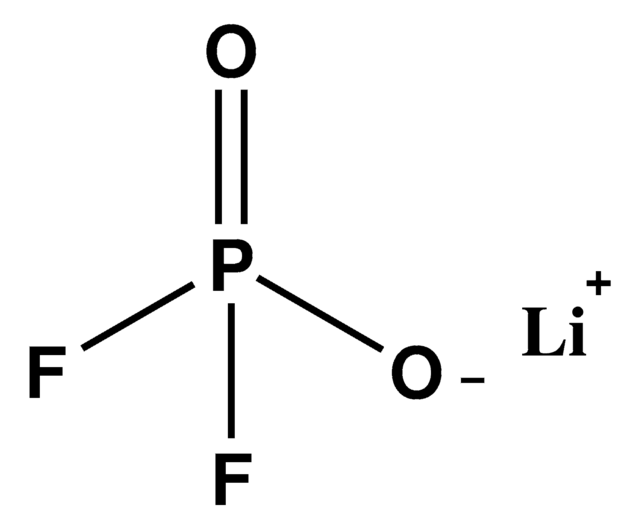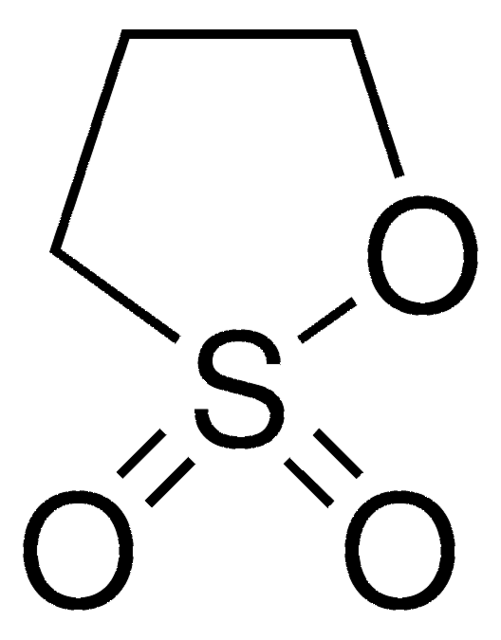757144
Vinylene carbonate
contains 80 ppm BHT as stabilizer, 99%
Sinonimo/i:
1,3-Dioxol-2-one, VC
About This Item
Prodotti consigliati
Saggio
99%
Stato
liquid
contiene
80 ppm BHT as stabilizer
Caratteristiche più verdi
Design for Energy Efficiency
Learn more about the Principles of Green Chemistry.
sustainability
Greener Alternative Product
Indice di rifrazione
n20/D 1.421 (lit.)
n20/D 1.422
P. ebollizione
162 °C (lit.)
Punto di fusione
19-22 °C (lit.)
Densità
1.355 g/mL at 25 °C (lit.)
1.355 g/mL at 25 °C
applicazioni
battery manufacturing
Categoria alternativa più verde
, Enabling
Temperatura di conservazione
2-8°C
Stringa SMILE
O=C1OC=CO1
InChI
1S/C3H2O3/c4-3-5-1-2-6-3/h1-2H
VAYTZRYEBVHVLE-UHFFFAOYSA-N
Cerchi prodotti simili? Visita Guida al confronto tra prodotti
Descrizione generale
Prodotti correlati
Avvertenze
Danger
Indicazioni di pericolo
Consigli di prudenza
Classi di pericolo
Acute Tox. 3 Dermal - Acute Tox. 4 Oral - Aquatic Chronic 2 - Eye Dam. 1 - Skin Irrit. 2 - Skin Sens. 1 - STOT RE 2 Oral
Organi bersaglio
Liver,Stomach
Codice della classe di stoccaggio
6.1C - Combustible acute toxic Cat.3 / toxic compounds or compounds which causing chronic effects
Classe di pericolosità dell'acqua (WGK)
WGK 3
Punto d’infiammabilità (°F)
181.9 °F - closed cup
Punto d’infiammabilità (°C)
83.3 °C - closed cup
Scegli una delle versioni più recenti:
Certificati d'analisi (COA)
Non trovi la versione di tuo interesse?
Se hai bisogno di una versione specifica, puoi cercare il certificato tramite il numero di lotto.
Possiedi già questo prodotto?
I documenti relativi ai prodotti acquistati recentemente sono disponibili nell’Archivio dei documenti.
I clienti hanno visto anche
Articoli
Experts discuss challenges and production processes of nickel-rich layered oxide cathode materials in energy storage systems.
Solid oxide fuel cells and electrolyzers show potential for chemical-to-electrical energy conversion, despite early development stages.
Li-ion batteries are currently the focus of numerous research efforts with applications designed to reduce carbon-based emissions and improve energy storage capabilities.
Lithium-ion batteries offer high energy density and cyclic performance for portable electronic devices.
Active Filters
Il team dei nostri ricercatori vanta grande esperienza in tutte le aree della ricerca quali Life Science, scienza dei materiali, sintesi chimica, cromatografia, discipline analitiche, ecc..
Contatta l'Assistenza Tecnica.















